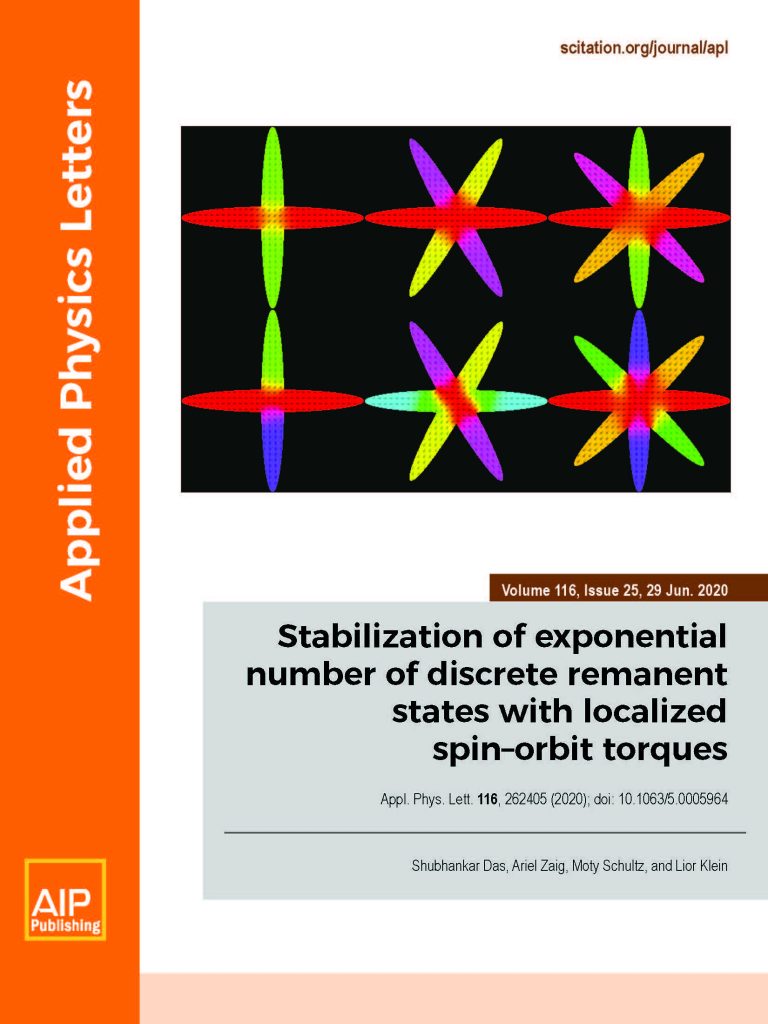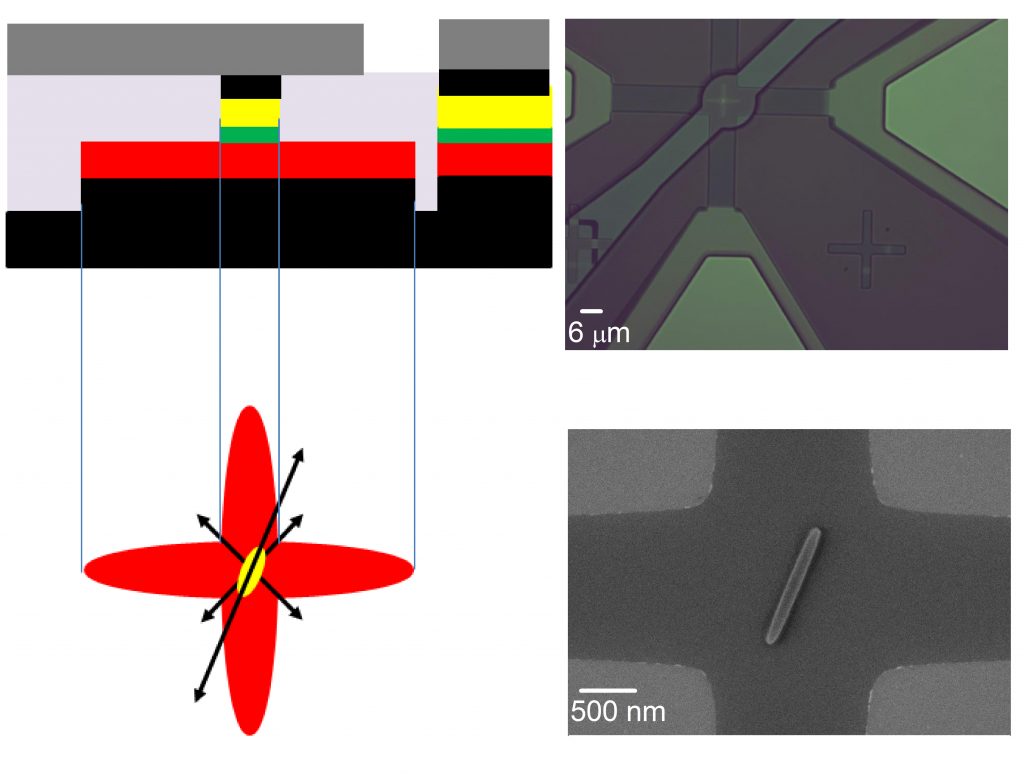Towards multi-level memory cells
One of the major challenges facing the MRAM industry is identifying novel routes for increasing the memory density. One option is to decrease the magnetic bit size, which faces intrinsic obstacles such as superparamagnetism. Another option is increasing the number of memory states per element which requires the increase of the number of stable magnetic states. This may be achieved either by using magnetic materials with an intrinsic magnetocrystalline anisotropy which gives rise to multiple easy axes, or by using shape to induce the desired magnetic anisotropy. A big advantage of the second approach is that it can be applied to materials already widely used by the magnetic electronics industry, such as permalloy.
Currently developed MRAM is based on magnetic tunnel junctions (MTJ) where each junction has two possible states. We have shown that the number of states can be increased dramatically by using magnetic structures that can support a large number of discrete magnetic states.
We have shown in a recent publication that a structure in the form of N crossing ellipses can be manipulated with spin currents into two to the power of 2N (2^(2N)) states.
Furthermore, we have demonstrated in another publication the performance of a multi-level MTJ which uses a magnetic layer in the form of 2 crossing ellipses.

